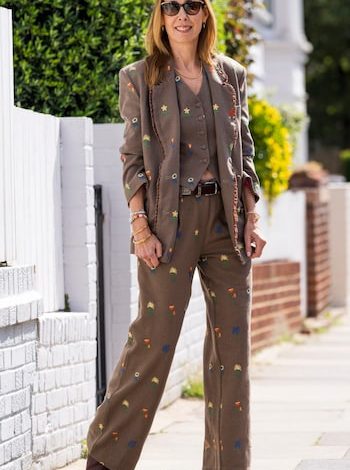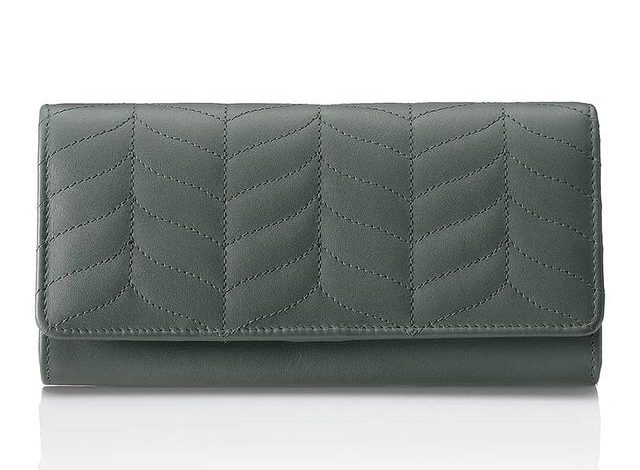
Why Carolyn Bessette Kennedy’s Fashion Legacy Lives On
November 7, 2023
Lost. A short word with limitless meaning. Four letters comprising of a single vowel; an “o” suspended among the consonants, like a life ring thrown out to sea, or to some, it’s a black hole where man is rendered finally powerless. It was John F. Kennedy Jr.’s Piper Saratoga plane that was lost at sea. It had left Essex County Airport in New Jersey at 8:38 p.m. on July 16, 1999. The destination was Hyannis Port via Martha’s Vineyard; his wife, Carolyn Bessette Kennedy, and her sister, Lauren Bessette, were aboard. John Jr., flying without a copilot, chose not to file a flight plan that night, and so when the plane blinked off the air traffic radar at 9:41 p.m., they were declared officially lost. Four days later, the plane’s wreckage was found off the coast of Martha’s Vineyard—no one survived.
John F. Kennedy Jr. needs no introduction. Crowned America’s son after his father President Kennedy was assassinated, every aspect of his life was publicly documented. There’s “John John” saluting his father’s coffin at three years old; then, a gangly teen, boating with his mother off the shore of Ari Onassis’s private Greek island; later, a dashing man graduating from Brown University; and finally, the gallant groom kissing his young bride’s hand in 1996. Carolyn Bessette was unknown, particularly in John’s circles—she was not a Hollywood starlet, of royal stock, nor a society girl. She originally came from White Plains, New York, lived in Manhattan, and worked in fashion. The world’s most eligible bachelor relinquished his title for her.
They made a gilded couple of beauty, brawn, and brains that kept the Camelot torch burning bright with their own distinguished star. The spotlight centered on Carolyn—everyone knew John Jr. already, but who was she? Graciously, she tolerated the camera gaze at public events, begged the paparazzi for a respectful distance when in private, and rarely sat for photoshoots. Her alluring minimal style, which celebrated the classic wardrobe pieces like the shirt, the dress, and the coat, was a disarming and daring move; it made for perfect tabloid fodder.
Young lives lost, such as John Jr., Carolyn, and Lauren’s, leave a void like no other. When sudden death strikes, the loved ones left behind attempt to rebuild a coherent picture, to answer the “why?” It’s our reflex as humans so that we can survive the incomprehensible. Combing and unearthing final traces of their existence—forgotten photographs, the lingering scent on a shirt, the crumpled-up note left in the pocket, the semi-burnt-out cigar in the ashtray—mundane remains of a normal day before it became their last.
Their sudden passing became a national mourning. The media was left with the unenviable task of comforting and inspiring. Susan White, then photography director at Vanity Fair called photographer Bruce Weber—fashion insiders knew he’d done a photoshoot with Carolyn, and White was on the chase. The initial concept was to memorialize the couple in some way, but then Bruce’s box of prints arrived. The VF team fell in silence as they sifted through the gelatine prints (nothing was digitized or Photoshopped at that time)—here was Carolyn alive again. In some shots, she is alone, while in others, she’s goofing around barefoot and almost makeup-less with her beloved dog, Friday. She appears in a black button-down shirt, faintly worn corduroys, painted red toenails, and her gold wedding band. Here was a rare private glimpse of the woman John Jr. had fallen in love with. Bruce had commented at the time that she was one of us—someone who preferred to be behind the camera instead of in front of it, and you sense this in the photos.
One portrait stood out to the team. The lens is tight on Carolyn’s face, turned a quarter in profile; hair strands are blown across her features by the wind; her oceanic eyes are cast upwards and speak a thousand words. This became the image that would grace the cover of the magazine’s September 1999 issue, which would turn out to be, at that time, its best-selling cover.
The charm of Carolyn lives on 24 years after her death, one reason being that her fashion legacy resonates with the same vibrancy today as it did when she was alive. Back then, only a handful of designers such as Yohji Yamamoto, Jil Sander, Ann Demeulemeester, and Alaïa, spoke to this certain kind of woman. One who valued quality, cut, luxurious fabrics, and clean lines over trends. Now there are more brands popping up with the same aesthetic. Social media accounts dissect every look Carolyn wore in pursuit of emulating her style, piece by piece. And so CBK, Carolyn Bessette Kennedy: A Life in Fashion, the first fashion book on her, was born.
When it came to choosing the cover for my book, it was a no-brainer. I had bought the Vanity Fair September issue when it first came out; I don’t recall the motive other than being taken by the sheer beauty of the photography—in the face of tragedy there is always beauty and light. As the first fashion tome dedicated to Carolyn’s style, the book required a cover from the only “fashion shoot” she’d ever sat for. This time, I received a digital file of all the shots that didn’t make the 1999 feature. I asked Bruce if he remembered anything from the shoot 20 years afterward, and he recalled, “Carolyn was wonderfully at ease that day. She had her dog with her, and I also photographed her with this beautiful bird. She was so happy and trusting with animals around. I don’t think many people know that about her, that she was such an animal person. You can see it in her face and in her smile from the photographs we did together that day.”
Indeed, there is an ease, joy, and playfulness. Carolyn’s natural beauty is disarming and pervades every picture. The Abrams team and I picked another photo from the same shoot that produced the unforgettable 1999 portrait. The camera is panned out and we get to see her hands—it appears that she’s talking with them (a sweet mannerism of hers, according to friends). Her long sinuous fingers dance like a music conductor’s, and her famous long hair seems to sway a little to the tune, but her eyes are focused away from the lens—it feels as if she’s explaining something to someone, but what it is, she leaves for us to decide.



